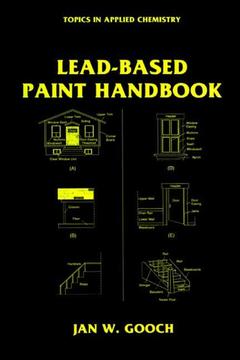Description
Lead-Based Paint Handbook, 2002
Topics in Applied Chemistry Series
Author: Gooch Jan W.
Language: English
Subjects for Lead-Based Paint Handbook:
Keywords
Approximative price 158.24 €
In Print (Delivery period: 15 days).
Add to cart
Publication date: 03-2013
288 p. · 15.2x22.9 cm · Paperback
288 p. · 15.2x22.9 cm · Paperback
Description
/li>Contents
/li>
Lead-based paint has become a national issue and will continue to be a hi- priority focus ofnational, state, and local agencies until there is no lead-based paint in the United States. Lead-based paint has become a tremendous health hazard for people and animals. Lead-based paint has been in widespread use throughout Europe and the United States. Lead has been known to be a health hazard since the time ofPliny the Elder (A. D. 23?79), but it was deemed that the advantages of lead in paint outweighed the health hazards. There has been a change in outlook, and in 1973 the U. S. Congress banned all lead paint from residential structures. A voluminous number of law suits have been initiated since, and continue to be litigated with the purpose of determining the parties responsible for the lead poisoning of children and others and to exact the indemnities. Lead-based paint is still authorized for use on bridges and nonresidential structures, and thousands of city, state, military, and federal government housing projects still contain lead-based paint. This paint must be removed if these dwellings are to be safe living quarters, especially for children. Aba- ment techniques continue to be evaluated; some have been used successfully. Lead-based paint abatement will continue into the next century, and it is hoped that this comprehensive volume will serve as a guide for those seriously interested in this important subject.
Introduction to LeadBased Paint. Paint and Related Materials. Lead Pigments. Health Problems Associated with LeadBased Paint. Methods of Detecting and Analyzing LeadBased Paint. Abatement of LeadBased Paint. Index.
© 2024 LAVOISIER S.A.S.

